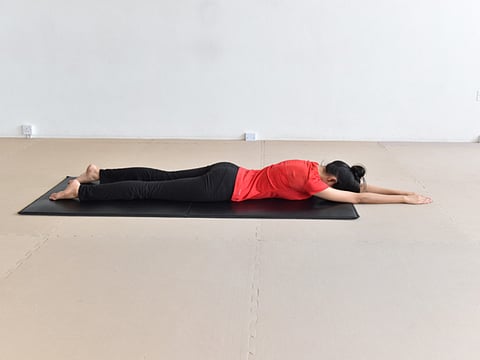Yoga to manage hypertension
Bharat Thakur guides you through the practices of this ancient Indian discipline

Your blood pressure may be different at different times of the day. It is usually higher when you first wake up, after you exercise or when you are under stress. When your blood pressure stays high most of the time, it can cause serious health problems.
When your heart beats, it pushes blood through the arteries to the rest of your body. High blood pressure, also called hypertension, happens when the force of the blood pumping through your arteries is too strong. Normally, hypertension is having a blood pressure higher than 140 over 90 mmHg (millimetres of mercury), a definition shared by the medical fraternity. This means the systolic reading (the pressure as the heart pumps blood around the body) is over 140 mmHg or the diastolic reading (as the heart relaxes and refills with blood) is over 90 mmHg.
Common causes of hypertension include lack of exercise, being overweight or obese, a faulty diet, stress and genetics. Exercise is recommended as a lifestyle for people suffering from hypertension. Practising yoga postures and techniques regularly can help keep it in check by lowering stress levels.
Techniques
Begin with basic joint rotation (neck, shoulder, wrist, hip, knees and ankles) and gentle stretching (practice of the week) followed by the breathing techniques listed below.
Nadi Shodhana Pranayama (psychic network purification)
Technique 1
Sit in any comfortable meditation posture (sukhasana or vajrasana). Keep the head and spine upright.
Relax the whole body and close the eyes. Practise deep breathing for some time. Bring your right hand to the nose and place the left hand on the knee.
Close the right nostril with the thumb. Inhale and exhale through the left nostril 5 times. The rate of inhalation/exhalation should be normal. Be aware of each breath.
After 5 breaths, release the pressure of the thumb on the right nostril and press the left nostril with the ring finger.
Inhale and exhale through the right nostril 5 times, keeping the respiration rate normal. Lower the hand and breathe 5 times through both nostrils together. This is one round. Practise 5-10 rounds, making sure that there is no sound as the air passes through the nostrils.
Technique 2: Alternate nostril breathing:
In this technique the duration of inhalation/exhalation is controlled.
Close the right nostril with the thumb and breathe in through the left nostril. At the same time count mentally, 1 to 5. This is the basic count. Breathe deeply. Do not strain.
Close the left nostril with the ring finger, release the pressure of the thumb on the right nostril and while breathing out through the right nostril, simultaneously count 1 to 5. The time for inhalation and exhalation should be equal.
Next, inhale through the right nostril, keeping the same count in the similar manner. At the end of inhalation close the right nostril, open the left nostril and exhale through the left, counting as before. This is one round. Practise 10-12 rounds.
PRACTICE OF THE WEEK
Titliasana
Pawanmuktasana
Advasana
Makrasana
Matsyakridasana
Next week: Yoga to manage hypertension - 2
— This is an interactive series, in which we will bring you practical tips
on daily living, inspired by the vision of yoga. Write in to tabloid@gulfnews.com with your questions and doubts regarding enhancing your lifestyle through yoga. For more information, call 800-YOGA (9642) or log on to artisticyoga.com
Sign up for the Daily Briefing
Get the latest news and updates straight to your inbox



